Released in 2021 by GMT Games, Bayonets & Tomahawks (or B&T for short) is a simulation of the French & Indian War from first-time designer Marc Rodrigue. A French-Canadian, Mr. Rodrigue has had a lifelong interest in the French & Indian War and is even a reenactor who performs regularly at such notable locales as Fort Ticonderoga (or Fort Carillon as it was first named by the French).
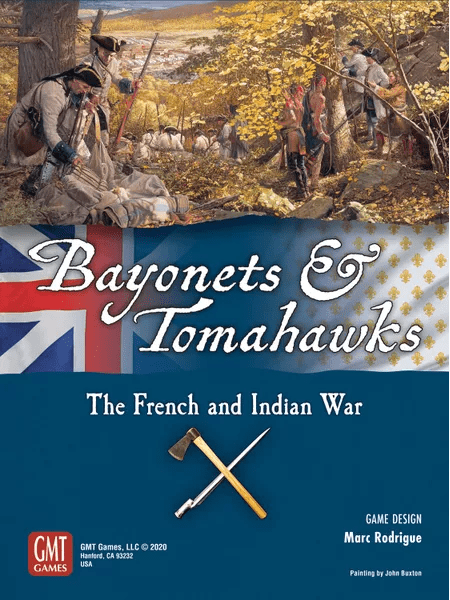
Although Native Americans fought on both sides, the British colonists named the war after their opponents. It began in 1754 and did not officially end until 1763. Two years after it began, the war expanded into a much larger conflict known as the Seven Years War. By this time the war in North America was, to a certain extent, a sideshow of this wider war. Regardless, the French & Indian War eventually led to Britain becoming the world’s predominant colonial power and laid the foundations for the American Revolution.
Faction Cards
Most card-driven games use cards that include an event in text and an operations (or ops) value. Players decide whether to use the card for the event or for its ops value (or sometimes both) to move units, put down control markers, bring in reinforcements, etc. Not so with B&T. Each faction card contains geometric shapes, either triangles, squares, or both. These shapes represent Action Points (APs) and correspond to the two main types of units in the games: triangles for light units and squares for brigades.

Light units represent a force of about 300 men that can move faster than regular troops. Brigades represent regular army troops who were much better equipped and trained than light units and contain 1500 men. They move slower than light units and are limited to roads and highways. The game also makes a distinction between Metropolitan brigades (French and British regulars) and non-Metropolitan brigades (British Colonials and French Canadiens). In addition to light units and brigades, there are round units that represent forts, artillery, and fleets, as well as small square units for notable commanders who fought in the conflict.

Each shape (i.e., AP) allows the player to move a stack of units. Solid squares are Army APs and can move a stack composed of any unit type, while solid triangles are Light APs and can only move stacks composed of light units. Outlined triangles are Indian AP’s and can only be used to move a single Indian unit or a stack of Indian units from the same Indian Nation.
Another distinct feature of B&T versus other CDGs, is that rather than having a hand of 5 to 7 cards to choose from, in B&T players are choosing between one of only two cards. At the start of each game, each player draws two cards from his faction deck, chooses one and discards the other. This becomes their “reserve” card. Then during each action round, players draw one card from their faction deck and secretly chooses to play either that card or the reserve card. Whichever card is not chosen, becomes the reserve card for the next action round. The French player not only draws a card for their faction, but also one from the Indian deck. Players simultaneously reveal their cards, and the player whose faction card has the highest initiative value as shown by the die symbol on the bottom of the card decides which player will go first.
As the Designer’s notes explain, he researched all the operations (raids, major battles, sieges, etc.) carried out during the conflict. He used this data to determine the total number of APs each faction typically had in each year. Thus, the type and number of symbols on all the cards in each deck represents the limiting factors of logistics and supply historically available to each side in the conflict. This is why this game is considered a simulation: the composition of the faction decks prevents players from exceeding the operational tempo they were able to perform.
Raids and Battles
Conflict in the game is carried out using one of two methods: a raid or a battle. Raids are hit-and-run operations against enemy towns and outposts intended to disrupt supplies rather than to destroy enemy units. Battles are direct confrontations between opposing forces and sieges against enemy fortifications.
Each raid requires a single light unit. It moves to an enemy space within range and rolls a die. If the raid fails, the unit returns to the space it started. If successful, a Raid marker is placed on the space to denote that it cannot be raided again this year. The raiding player is awarded raid points equal to the value printed on the enemy space. That faction’s raid point marker is moved up the Raid track until it reaches the last space (8 raid points), at which time they are awarded a Victory Point. Their raid marker is then placed back on the zero space of the Raid track. The successful raiding unit is returned to its starting space, except if it is an Indian unit. Indian units are moved to the friendly losses box on the map board and simulates the raiders going back home with their plunder. These units return during the Winter Quarters phase at the end of the year.
When a moving unit or stack enters a space containing enemy units, that space is marked with a Battle marker. Both players can move additional units into the battle space if they’re able. Both players place their Battle Victory markers on the Battle Track on the zero space: the defender in the bottom row and the attacker in the upper row. Certain conditions may cause the marker to go up or down (e.g., a force attacking a fort without any artillery loses two spaces on the track and thus starts on the -2 space). Each player then rolls a single die for each unit in their force. These are rolled in a very specific order as outlined in the rulebook and player aid. Although the attacker rolls first, the effects are considered simultaneous.
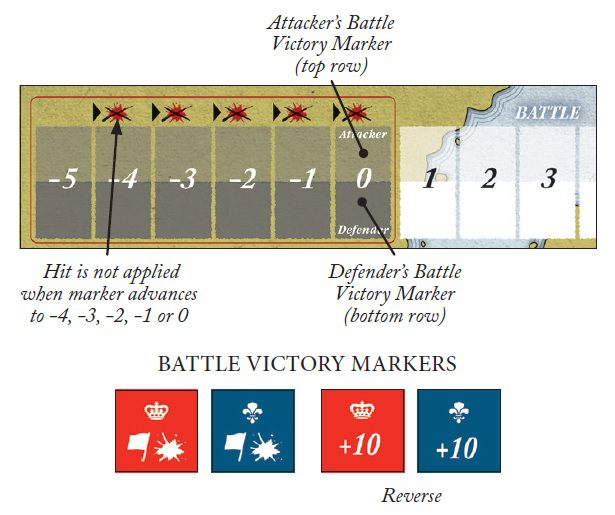
The game comes with six custom dice. Each die face contains a symbol. To cause a hit on an enemy unit, the symbol rolled must match the shape of the unit which rolled it AND be the same shape as a unit in the enemy force. In other words, light units can only inflict casualties on light units, brigades can only hit other brigades, and round units (artillery, fleets, and forts) can only hit other round units. Each hit advances the player’s Battle Victory marker one space on the Battle Track. A flag results in no hits but does advance the player’s Battle Victory marker. A B&T symbol result varies depending on the unit which rolled it, and a crescent is a miss which can also cause a leader casualty. The player that advances farthest on the Battle Track is the winner (ties go to the defender), and the loser must retreat. If the winner’s Battle Victory marker is at least three spaces higher than the loser’s, the loser is routed and must lose one additional unit.
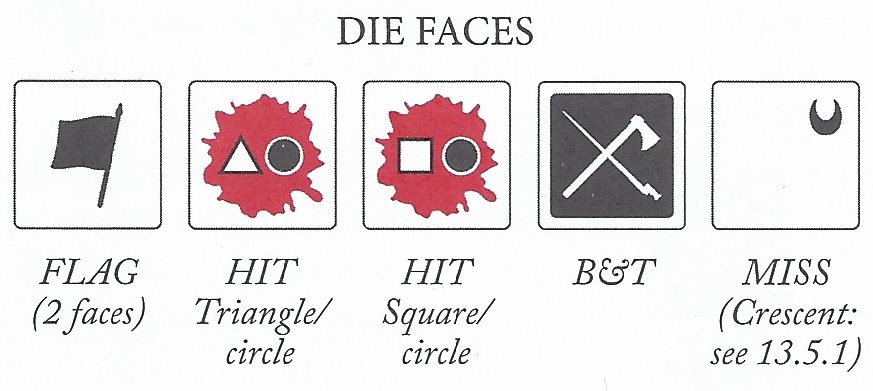
So why can’t light units cause hits on brigades and vice versa? Once again, the designer notes explain. Mr. Rodrigue “compiled detailed statistics of all skirmishes and battles” of the war and learned that each unit type was best able to inflict losses on units of a similar type. Light units simply couldn’t “mow down entire battalions” and light units would simply disperse and take cover in the woods when facing line infantry. That is not to say that dissimilar units did not have any effect on the outcome of the battle. That is what is reflected by the flag and B&T die faces; ambushes, maneuvering onto an enemy’s flank and forcing them to withdraw, etc. The resulting system accurately portrays the results of the fighting in the French & Indian War.
Variable Operations Tempo
During the 18th century, weather often dictated the pace of military operations. Most armies settled into Winter quarters since maneuvering – not to mention staying alive – was impracticable for any army in the field during winter months. While the pace of operations picked up in Spring and Autumn, heavy rains and storms meant that the heaviest campaigning occurred during Summer. B&T simulates this by having three types of action rounds (ARs) on the game turn track: six normal ARs representing about 3 weeks of time during the summer months, three buildup ARs representing the lower tempo of operations during Spring and Autumn, and three logistic rounds (LRs) when various types of reinforcements enter the game and the usual cessation of active campaigning in Winter.
Each faction has a separate Buildup deck whose cards are used during the buildup ARs. These cards generally have fewer APs than the normal faction deck, thus lowering the ops tempo accordingly. There is a single LR when new fleets and other reinforcements arrive in theater from Europe, and another during which the British faction enlists colonial troops. The Winter Quarters LR is used to perform a Victory Check. If neither player has achieved a victory, the game board is prepared for the next year (if playing a multi-year scenario). All Raid markers are removed from the map, as are all Rout and Out-of-Supply markers. Indians lost to successful raids are returned to their home villages, colonial brigades are disbanded, etc.
Fog of War
Fog of war refers to the uncertainty inherent in military operations. Introduced by the Prussian military analyst Carl von Clausewitz, fog of war stems from the uncertainty regarding one’s own capability, those of their adversary, and other unpredictable events. Most wargames use die rolls to partially capture the uncertain outcome of battles. B&T includes two other mechanisms.
The first are the Vagaries of War (VoW) tokens. A certain number of these tokens are added to the bag of reinforcements during LRs. These tokens can reduce the number of fleet and brigade reinforcements from entering the games, allow additional artillery and light units to enter the game, or permit the British to muster more colonial brigades. Thus, players can never be sure how many reinforcements they will be getting each year.
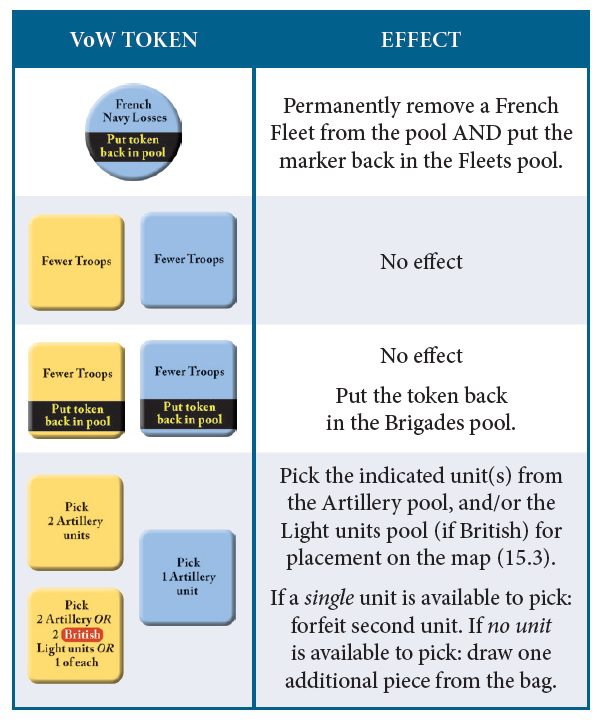
The second fog of war mechanism is the War in Europe (WIE) chits. These chits have a value of 0, 1 or 2 victory points and are used to simulate the uncertainty regarding the progress of the war in Europe and the possibility of peace being declared. Each time a player eliminates an opposing Metropolitan brigade, they draw a random WIE chit from their respective pool. They secretly inspect the and either place it face down on the WIE box at the end of their victory track, replacing any chit already there, or discard it. During the Victory check of each Winter Quarters LR, both players reveal their WIE chits. The player with the higher WIE chits receives victory points equal to the difference between the two chits. Both players then discard their chits back into their respective pool.
Other Bits of Chrome
In addition to marching across land, armies can be transported by fleets. These armies must stay in the Sail Box for one AR before they can be landed on a friendly coastal space as the first step of the next AR. Landing doesn’t cost the player any APs, but a Landing marker is placed on the stack. If attacked, the stack must move their Battle Victory marker back one space on the Battle track to simulate the vulnerability of troops coming ashore.

Players can use an Army AP (i.e., non-light units only) to marshal troops. This allows units in adjacent spaces to move into their space, provided they are permitted to cross the connection. For example, if the connection is a path, then an adjacent brigade could not move into the activated space, but light units could. As with landing, players must put a Marshal Troops marker on the activated space and suffer a negative battle penalty in any ensuing combat that AR.
Non-routed, in-supply brigades can use an Army AP to perform Construction provided its space doesn’t contain enemy units. Two types of Construction are allowed: fort construction or road construction. Simply place the fort construction marker on the activated space or the road construction marker on a path connected to the activated space. During the next AR, the player’s brigades (if still non-routed and in supply) can use another Army AP to complete the construction by replacing the fort construction marker with a Fort or flipping the road construction marker to its Road side.
Components
The game components are top notch. The beautiful, mounted map board covers the entire theater of operations and all the tracks needed to play the game. The cardboard counters are thick and pre-rounded, so no counter clipping is required. The faction decks are of good quality and easy to read, while the custom dice are a nice touch and feel good in your hand. Even the extra sturdy game box is something to behold with its period artwork from John Buxton on the cover.
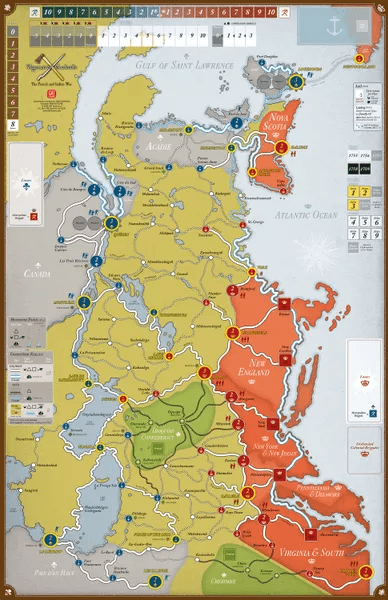
The 24-page full color rulebook is laid out well and easy to follow with few instances of ambiguity. The game also comes with a 48-page playbook that includes examples of play for most of the rules in the game. So, if you’re unsure exactly what the rules mean, consult the playbook. It also includes a strategy primer, a historical description of each of the events on the faction cards, designer notes, scenario variants, and more. I recommend reading the designer notes to help you get your head around the rationale behind some of the game’s novel mechanics.
Impressions
The game is rated at 3.27 on BoardGameGeek’s 5-point complexity scale—a medium to medium heavy game—which is about right. Because the game introduces some new concepts and mechanics, even players of other card driven wargames will need to reference the rulebook and playbook from time-to-time during their first few plays. But once they’re behind you, you’ll find the game is relatively easy to play. Just select a card, reveal it, and move the indicated units or stacks of units. Even the logistics rounds are straightforward to execute.
Analysis paralysis aside, the game moves at a steady pace with very little downtime between player turns. That’s because of how the turn sequence is structured. Unlike “I go, you go” games that have each player taking turns to both move and have combat with all their units, B&T has players taking turns moving their units, with the initiative player deciding whether to go first or second. Players can even opt to use a reaction marker to reserve one of the APs to respond to the other player’s move. Once all APs are expended, then and only then is combat resolved in all spaces regardless of who initiated it. This mechanic not only keeps both players engaged, but it also more realistically simulates the combat operations of this era.
The only aspect of the game that some may find tedious is executing combat. Even with multiple plays under your belt, you’ll likely need to refer to the rules and player aid to determine the effect of the combat die rolls for each unit. Furthermore, because the die must be rolled and resolved for each different type of unit on both sides in the engagement, each combat takes time to resolve. As mentioned earlier, the designer’s intent was to accurately model the capabilities and limitations of the different types of forces—light units, regular brigades, artillery, fortifications, etc.—of the period. But this does come at the price of a more complex combat resolution process than simply using a single die roll. I think having each side roll for each type of unit adds a bit of tension as you see the Battle Victory markers incrementally move up the track.
Summary
B&T will certainly appeal to aficionados of the French & Indian War. But if you’re just looking for a strategic simulation of an asymmetric conflict that is relatively easy to learn, then B&T has a lot to offer. And because it has multiple scenarios ranging from a single year to a campaign covering the entire war, players can find something that will fit within their available schedule. Additionally, while designed for two players, you could play with up to five players by having each command different units within each faction: two British (British and Colonial) and three French (French, Canadiens, and Indian). It can even be played solitaire.
The French & Indian War was a turning point in the history of North America and playing B&T is an excellent way to learn more about this pivotal conflict. I give it high marks for both its historical accuracy and satisfying game play. And all of this comes in a beautiful package with high replayability and top-notch components. If you could have only one game about the French & Indian War, this could very well be it.


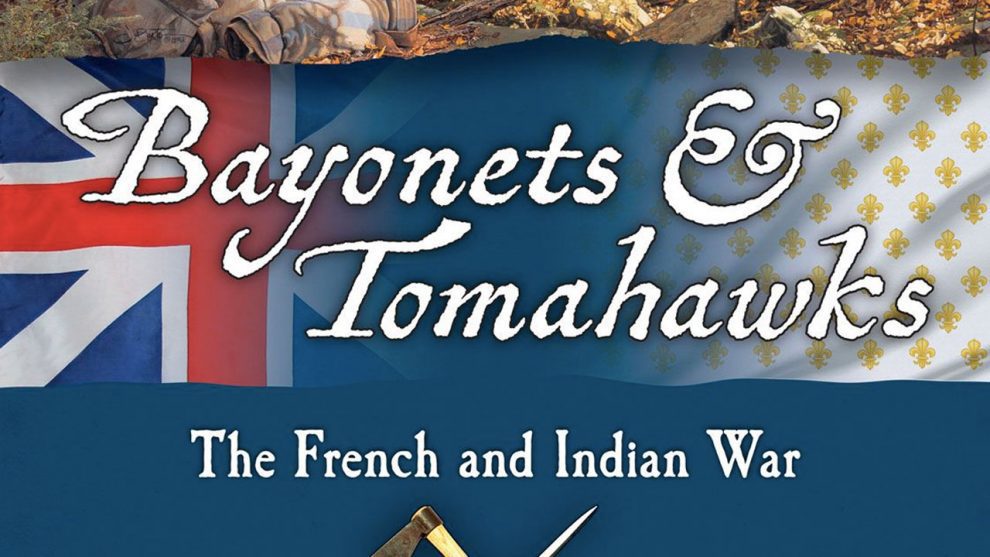




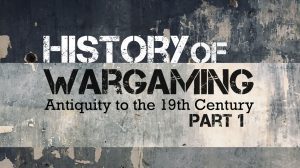




Add Comment